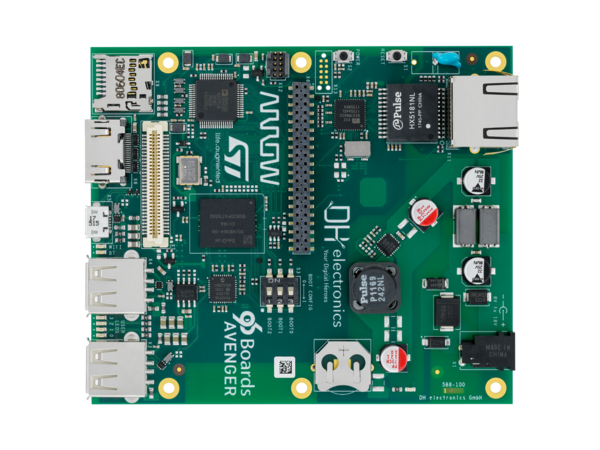Avenger96: Difference between revisions
From Wiki-DB
Jump to navigationJump to search
| Line 93: | Line 93: | ||
:- Based on kernel 5.4.x and Yocto version dunfell | :- Based on kernel 5.4.x and Yocto version dunfell | ||
* [https://github.com/dh-electronics/manifest-av96 Yocto meta layer --> Github] | * [https://github.com/dh-electronics/manifest-av96 Yocto meta layer --> Github] | ||
:DH electronics Github contains the meta-av96 layer for ST | :DH electronics Github contains the meta-av96 layer for ST SDK. Please see readme.txt which describes the build process. | ||
* [[media:Avenger96_v6.0_2020-11-09.zip|OpenSTLinux-2.0 based on Yocto Dunfell LTS and Linux 5.4 - v6.0 Starter Image]] (Supported by Arrow Electronics) [[Starter Image Changelog]] | * [[media:Avenger96_v6.0_2020-11-09.zip|OpenSTLinux-2.0 based on Yocto Dunfell LTS and Linux 5.4 - v6.0 Starter Image]] (Supported by Arrow Electronics) [[Starter Image Changelog]] | ||
Revision as of 15:54, 18 December 2020
The Avenger96 board is the official DHCOR STM32MP1 reference design!

|
Introduction
The AVENGER Board is a 96Boards compliant consumer edition board based on the STM32MP15 series of SoCs. The STM32MP15 series is a highly integrated multi-market applications processor designed to enable secure and portable applications within the Internet of Things. AVENGER board features Dual-core Arm® Cortex®-A7 processors operating at up to 650 MHz, Single core Arm® Cortex® M4 operating up to 209 MHz. In addition, an extensive set of interfaces and connectivity peripherals are included to interface to cameras, touch-screen displays, MMC/SD cards and media processor engine. It also fully supports wireless communication, including WLAN and BLE.
Technical Details
|
|
Documentation
- Avenger96 588-200 Getting-Started R03
- NEW DHCOR STM32MP1 User Manual R05 IMPORTANT: Please have a look at NEW chapter 24. Hardware design checklist
- NOTE: Please also have a look at the STM32 MPU wiki: Links
Design Files
- Avenger96 Schematic
- Avenger96 Bill of Material
- Avenger96 Assembly Top
- Avenger96 Assembly Bottom
- Avenger96 3D STEP file
- DHCOR STM32MP1 Allegro/Orcad schematic and layout symbols (release date: 16.10.2019) Now with Allegro *.brd file and 3D information
- DHCOR STM32MP1 3D STEP file
- Avenger96 CubeMX configuration (release date: 03.05.2019)
Software
DH Mainline based Linux
- Notes:
- - The Mainline based Linux offers Etnaviv GPU driver support!!!
- - Based on kernel 5.4.x and Yocto version dunfell
- NEW Yocto meta layer --> Github
- NEW DH Mainline based Starter Image
- NEW Linux and bootloader documentation
OpenSTLinux
- Notes:
- - Based on OpenSTLinux v2.1
- - GPU support based on original vivante GPU driver.
- - Based on kernel 5.4.x and Yocto version dunfell
- DH electronics Github contains the meta-av96 layer for ST SDK. Please see readme.txt which describes the build process.
- OpenSTLinux-2.0 based on Yocto Dunfell LTS and Linux 5.4 - v6.0 Starter Image (Supported by Arrow Electronics) Starter Image Changelog
- This Image includes four different bootmodes to support some additional mezzanine boars. Click here to learn, how to change them.
- X-LINUX-AI OpenSTLinux Expansion Package: Description: Expansion Package that targets artificial intelligence for STM32MP1 Series devices.
- NEW X-LINUX-AI OpenSTLinux Expansion Package
- NEW How to install X-LINUX-AI v2.0.0 on Avenger96 board